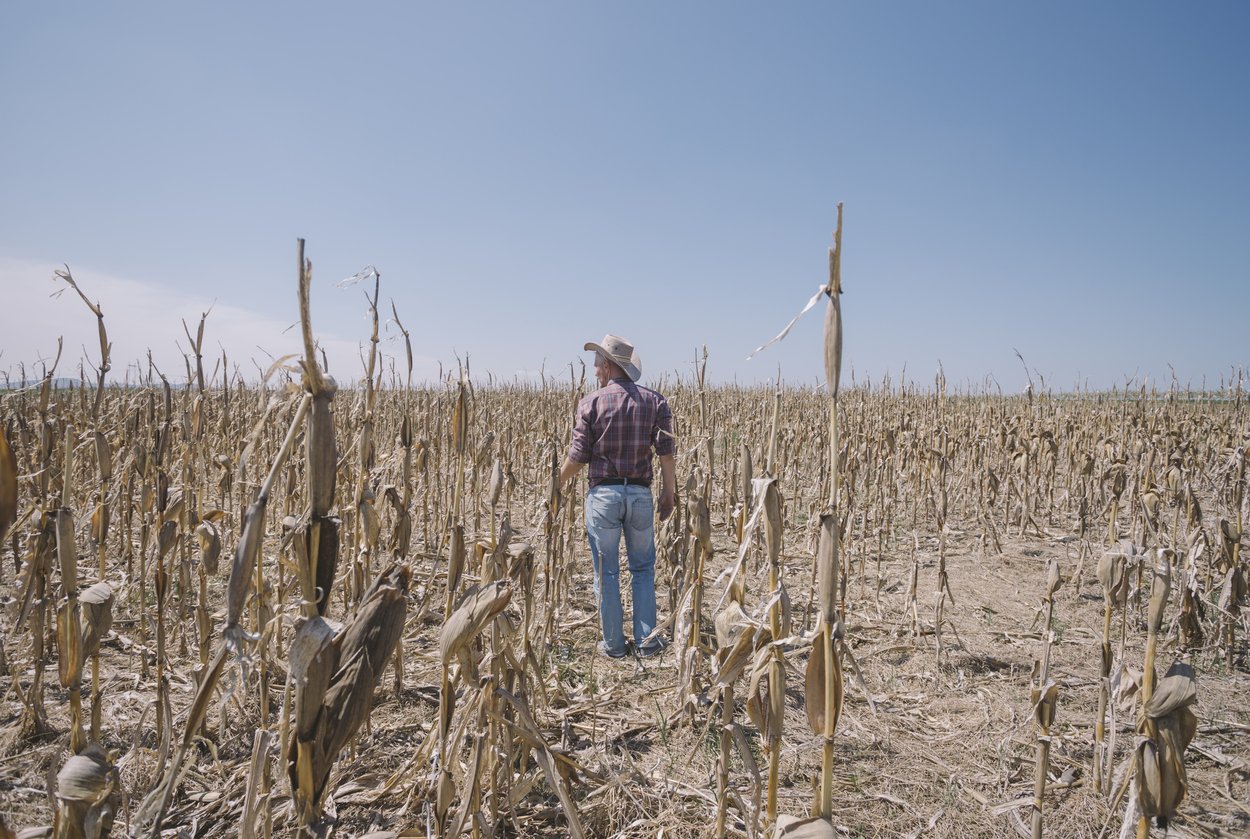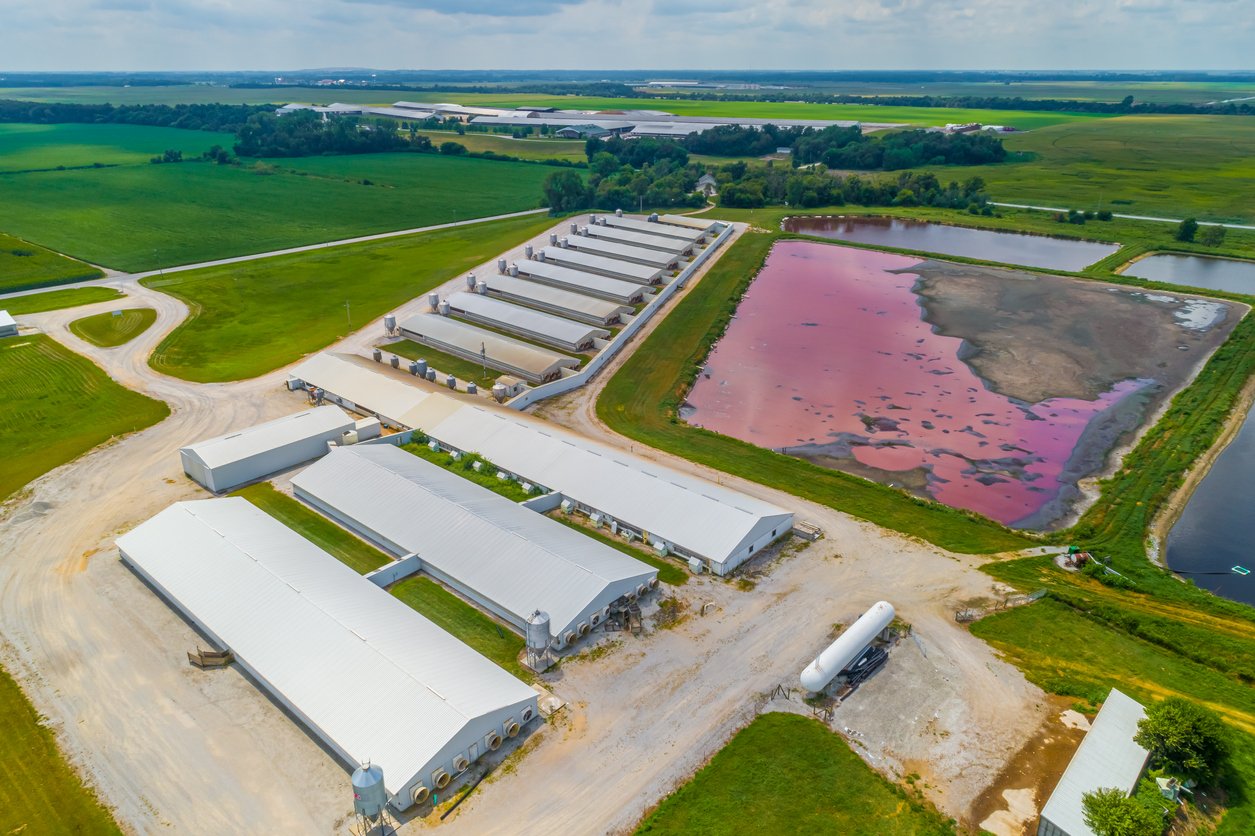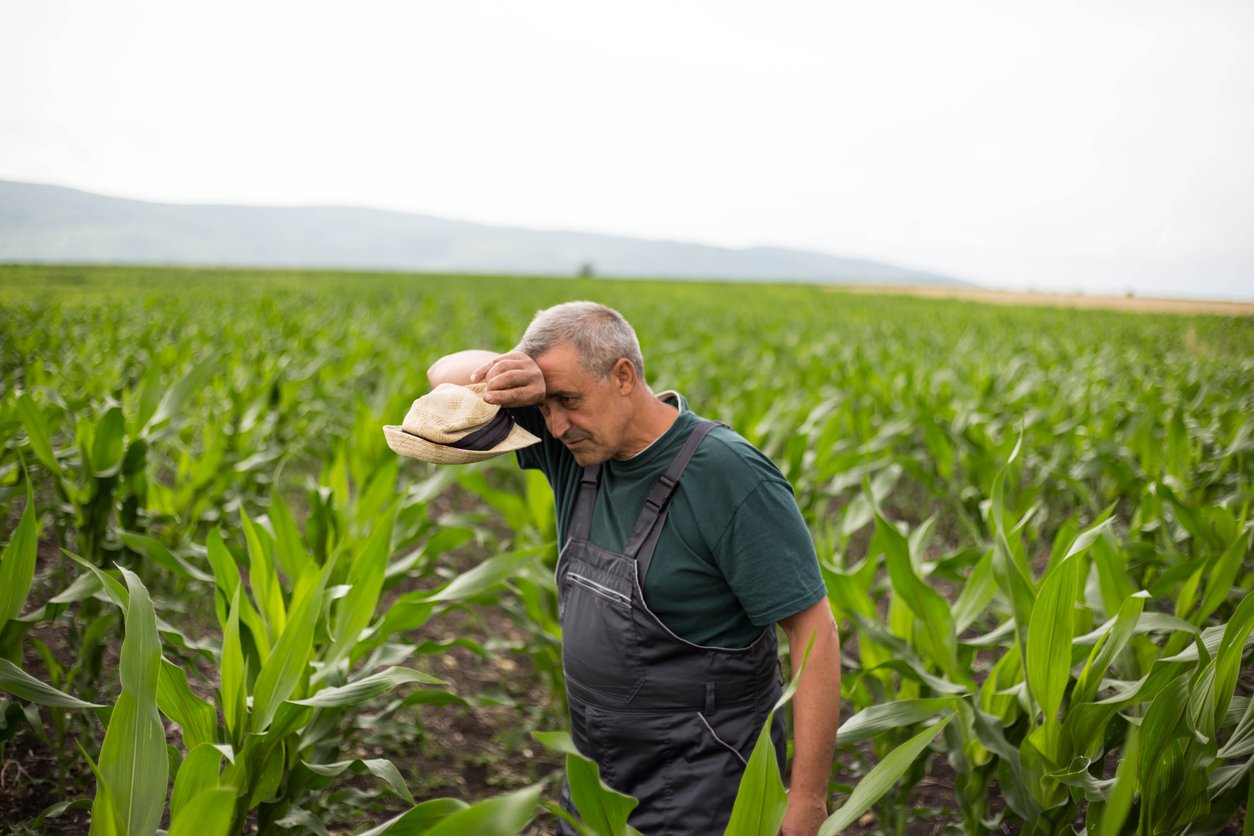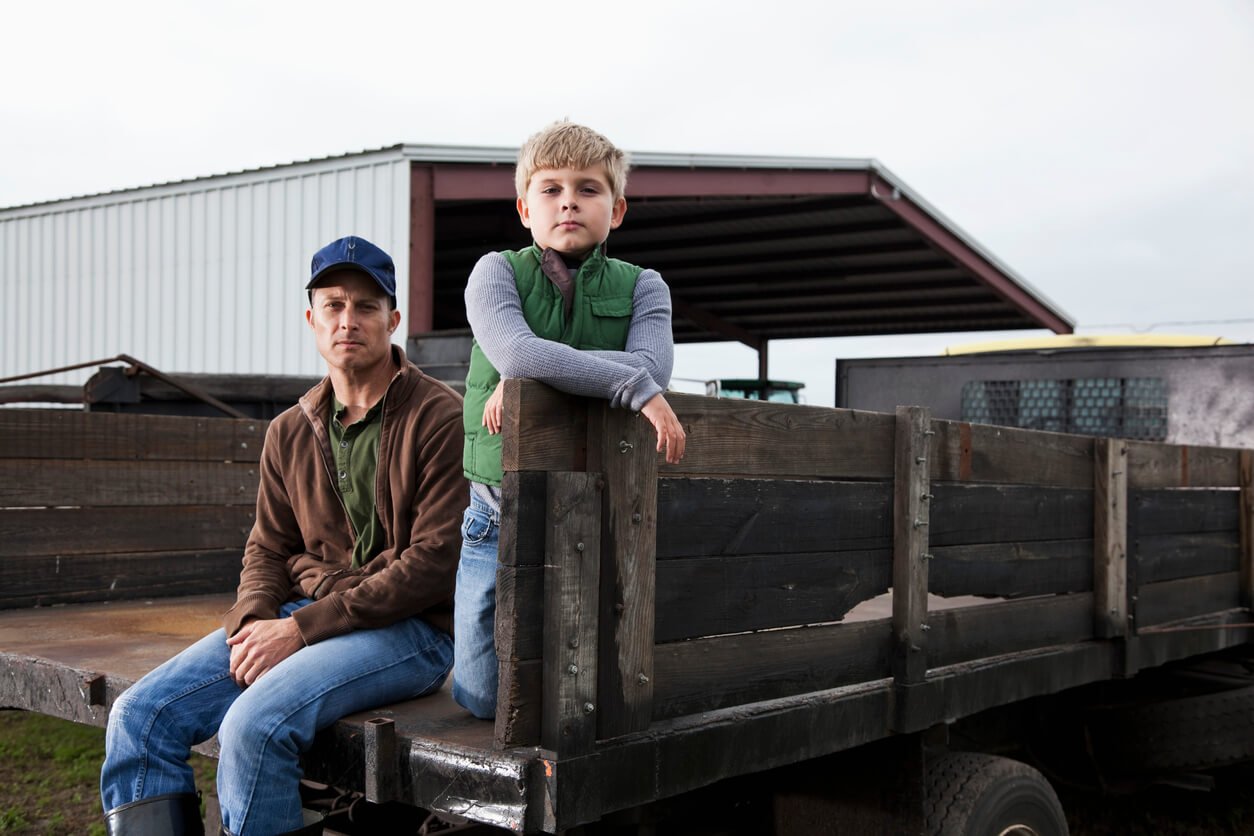“Old McDonald had a farm, E-I-E-I-O.”
When you think of a farm, do you picture idyllic, peaceful places with lush fields, happy and frolicking animals, and abundant and delicious produce? In your mind’s eye, do you see hardworking farmers and their families sitting down to hearty meals after a day of satisfying labor?
Once upon a time in the US, this vision would have been largely accurate and quite commonplace. In the 1800s, roughly 90% of the US population lived on farms. Outside of city centers, agriculture was the main livelihood, with the average farmer producing enough food to feed up to five people.
And while there’s still a lot of farmland in the US, the number of small farm owners has dwindled drastically. Today, less than 1% of the US population lives on a farm, and the number of farms is decreasing.
The most endangered type of farm is the small family farm, defined by the US Department of Agriculture (USDA) as a place that produces and sells at least $1,000 of agricultural products per year and has a gross income of $350,000 or less.
In the US, small farms accounted for less than one-fourth of food production in 2020, down from nearly half in the 1990s. And the agricultural landscape continues to change, fueled by technology and increased industrialization, resulting in larger and larger farms. These farms are also increasingly owned by those who don’t live in the communities: often faceless multinational corporations whose primary metric of success is profit, rather than the well-being of the community or those who labor on their farms.
It’s becoming harder than ever for many small family farmers to make it. They face unprecedented and relentless challenges that threaten their income, reduce their outputs, constrain their resources, and damage their mental health.
But what does the decline of small family farms mean for the US agricultural system? Are they still important to the food system or the health and vitality of rural communities? And what are some farmers doing to meet these challenges?
Why Small US Farms Matter

While they’re struggling, small family farms have by no means completely disappeared. Eighty-nine percent of US farms fall into the “small family farm” category — and for good reason, as you’ll see.
Small Farms Keep Food, Money, and People Local
Farming is still primarily a family business. Having family members who can work the land, or pitch in when needed, is an effective way to keep labor costs low. That means small farms can theoretically be more financially efficient than larger “factory-sized” farms and can provide an entry point into the profession for beginning farmers — especially those from under-resourced communities.
Small farms and farmers also tend to keep more of the money they earn in their rural communities, compared to giant multinational farms. This supports economic growth and job creation in communities and improves the standard of living — which in turn makes people want to live there and become a part of, or continue to be a part of, those communities.
Family farms that are rooted in local communities are more likely to feed their neighbors, rather than having their produce end up in big-box stores far away. This contributes to local food security, as these communities don’t have to rely on long supply chains (many of which continue to face challenges).
Many small family farms also participate in community-supported agriculture (CSAs), which allows them to share both the rewards and ever-present risks of farming with their neighbors. CSAs can enable the farms to receive more stable income, and the community gets very fresh, often organic, produce either delivered right to their homes or at a designated drop-off point.
If you’re interested in learning more about community-supported agriculture, our article on CSAs explains more about them, including how to find and join one in your area.
Small Farms Employ Healthier and More Sustainable Crop Systems
Another way small farms contribute to the resilience of the food system is through increased diversity of crops, often produced through more sustainable methods. Smaller farms are much more likely to employ regenerative farming techniques than large industrial agriculture, which helps produce healthy soil for long-term fertility, as well as tastier and more nutrient-dense crops.
As a result, small family farms look and act more like the classic depictions of farms from storybooks than larger farm operations do — and are much healthier to be around as a result. Industrial agriculture typically creates environmental disaster zones through monocropping, with pesticides blown onto other farms as well as into residential areas, and fertilizer runoff threatening local waterways.
So there are some very good reasons to preserve and invest in family farms.
Why Are Family Farms Disappearing?

There are many threats to the viability of small family farms, including regulatory and structural disadvantages that penalize small-scale agriculture, financial constraints, lack of support and infrastructure, climate change, and competition from giant factory farms.
The Economics of Small Farms
Smaller farms are becoming increasingly fragile economically. Most small family farms have an operating profit margin of less than 10%, which creates a high financial risk whenever anything unexpected happens. There just isn’t enough of a buffer to handle a bad yield, weather event, pest damage, or reduced market demand.
With such small and precarious profits, many farming families have to rely on non-farm income, such as family members taking on outside jobs, to continue farming. As Sandi Kronick, founder and CEO of Happy Dirt — an organization that supports organic farmers — told FRN in an interview, we’re asking farmers to “donate their lives and their livelihoods” to feeding the rest of us, without being taken care of in return.
And while small family farms saw their financial risk increase over the past 10 years, large and corporate-owned farms saw their risk lessen, thanks to government payments and assistance programs that seem to increasingly favor large-scale family farms and nonfamily (corporate) farms.
In fact, it’s misleading to talk about profits at all in many cases. Operators of small family farms often reported losses from farming. In 2020, the average farm income for two types of family farms was in the red. The average net income for off-farm occupation farms (where the farm operator also holds a job outside of the farm) was –$2,427, and for low-sales farms, the figure was –$1,637. Yup, those are minus signs, meaning the typical farmer in these situations was paying out of pocket for the privilege of growing food for the rest of us.
Many small family farms are struggling under crippling debt, and failed payments and farm bankruptcies are rising. To make things worse, the prices paid to farmers for commodity crops (agricultural crops grown in large quantities for sale in the global market, such as corn, soy, cotton, and wheat) and subsidies are falling because of increased supply due to technology and globalization.
Because US farm policy no longer establishes a “floor” below which prices cannot fall, the prices farmers receive for most commodity crops have been below the cost of production almost every year since 1981.
Climate Change and Small Farms
Now imagine trying to deal with these economic hurdles while the very air and soil around you are changing, often in drastic ways. Temperatures are rising, precipitation patterns are shifting, and in many communities, drought conditions happen more frequently and last longer than in recorded memory. That’s the knock-on effect of climate change, which is requiring farmers to work harder and spend more to produce the same yields as they would under “normal” or historical weather conditions.
Even with their best efforts, some farmers are seeing crops struggling to grow at all under these intense and unfamiliar conditions.
The American Farm Bureau Federation surveyed 652 farmers and ranchers in drought-stricken regions of the US in September 2022. That survey suggests 2022 yields were down by as much as one-third compared with 2021. And drought isn’t the only extreme climate impact. In other parts of the country, the climate crisis means some crops that require dry conditions are getting too much rain and failing to thrive, or rotting in the ground.
Crop Insurance Challenges
The US government created the Federal Crop Insurance Program (FCIP) to help protect farmers against financial losses due to adverse growing and market conditions. You might think that this would help protect farmers from the very kinds of crop losses that we’ve been seeing. Unfortunately, as of 2020, fewer than 10% of small farms were able or choosing to take advantage of crop insurance.
Farmers who didn’t avail themselves of this insurance typically gave three reasons. First, the premiums were too high — often unaffordable. Second, the process was overly complex, with arcane regulations and excessive paperwork. That might be okay for a giant corporate farm with a dedicated office staff, but proved too onerous for most small family operations.
Third, the insurance program structure was created to protect large commodity farming — think mega-field after mega-field of soy and corn — rather than a small and diversified crop of fruits and vegetables. The numbers tell the story: According to a report by the US government’s Foreign Agriculture Service, “more than 90% of planted acres for corn, soybeans, and cotton and more than 85% of wheat planted acres were insured through the FCIP.”
In essence, the crop insurance system as it currently stands actually incentivizes farmers to grow the very crops that are more likely to struggle due to climate change and does nothing to encourage farmers to experiment with new varieties and different growing practices to mitigate that risk. And it gives more protection and a competitive advantage to the large-scale mega-farms at the expense of smaller farmers. This means that many small farms are going unprotected and disproportionately suffering the effects of climate change.
Family Farms vs Factory Farms

Probably the biggest contributing factor to the decline in family farms and many of the struggles they face is the rise of factory farms and CAFOs (concentrated animal feeding operations). While family farms make up the majority of individual farms in the US, the lion’s share of agricultural yield comes from monocultures and large factory farms.
Aside from their size, which allows them to save money by buying in bulk and negotiating favorable prices from their vendors, monoculture factory farms have an unfair economic advantage legislated by the US government: access to subsidies and payouts.
And the CAFOs are such large and powerful consumers of farm crops that they drive many farmers’ decisions about what to grow. Some small farmers end up with no choice but to produce corn and/or other commodities to fill the voracious appetite of livestock operations — just to stay in business. What doesn’t end up in the bellies of factory-farmed animals is often sold to corporations to convert into biofuels like ethanol, or sold to junk food companies to be used as ingredients in the ultra-processed foods that today make up 62% of the American diet.
Large factory farms and CAFOs also hog (apologies to hogs; maybe the verb to keep something to oneself should be “to human”) water supplies, often leaving precious little clean water for small family farms.
Some farmers are also trapped by the seed and agrochemical market, especially if they have gone down the path of growing bioengineered commodity crops. Over time, they need to buy and apply larger quantities of weed killer as unwanted plants mutate into herbicide-resistant “superweeds.” And because monocrop farmers have invested so heavily in machinery and infrastructure for growing and harvesting, they can’t easily exercise free choice and move to another crop or growing model.
All this adds up to huge advantages for the largest industrial farms which often have the worst environmental impact. And in the “winner-take-all” industry that farming has become, big farms can then grow even bigger by buying up competitors’ land and squeezing more family farmers out of business.
Farmer Mental Health and Other Problems

The issues covered above are not the only ones faced by small family farmers. Many Black farmers and other farmers of color face racism, discrimination, and inequality, in addition to financial challenges and land loss.
As Sandi Kronick of Happy Dirt told FRN, perhaps the biggest problem faced by small family farmers — especially those from traditionally marginalized communities — is simple exhaustion.
In her words: “When you’re constantly struggling, because every day you’re putting out this fire or that fire, and then every few months there’s some larger disaster that you’re dealing with, eventually you’re going to wake up and say, ‘Why am I doing this? What goal am I chasing?’ And so that kind of accumulated physical, emotional, environmental, and social depletion creates a cumulative effect. Farming is one of the most dangerous careers, and farmer suicide is a very real thing.”
One of the challenges faced by small farmers is how to avoid losing a farm that may have been in the family for generations. And it’s hard; young people who grow up in farming families may have little reason to covet the farming lifestyle, especially after watching their elders increasingly struggle to stay afloat. They often migrate to more urban areas, leaving the old folks to keep farming.
This urban migration represents a global crisis: the average age of farmers keeps rising. And with not enough young people to take over, the very notion of a family farm becomes endangered. That said, there is something of a resurgence of interest in farming among youth, especially those who are more ecologically minded and want to overhaul the agricultural system to favor organic, regenerative models and practices.
Resources for Learning About the Challenges Facing Small Family Farms
If you’re interested in a deep dive into the struggles facing American family farms, here are four books to check out:
- Farm (and Other F Words): The Rise and Fall of the Small Family Farm, by Sarah K Mock
- Bet the Farm: The Dollars and Sense of Growing Food in America, by Beth Hoffman
- Perilous Bounty: The Looming Collapse of American Farming and How We Can Prevent It, by Tom Philpott
- Farming While Black: Soul Fire Farm’s Practical Guide to Liberation on the Land, by Leah Penniman
In the next article in this series, we’ll look at a small family farm that’s finding a way to succeed — by enlisting community members and organizations as partners and allies.
Tell us in the comments:
-
What surprised you about the challenges that small family farms face in today’s world?
-
Do you get any of your food from a local family farm? Do you know any farmers?
-
Are there family farms in your region that you could support with your business, through a farm stand, farmers market, or visiting the farm?
Featured image: iStock.com/kali9




